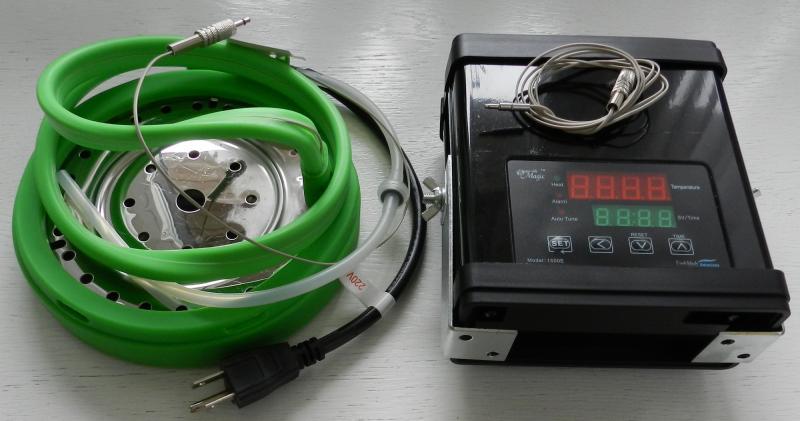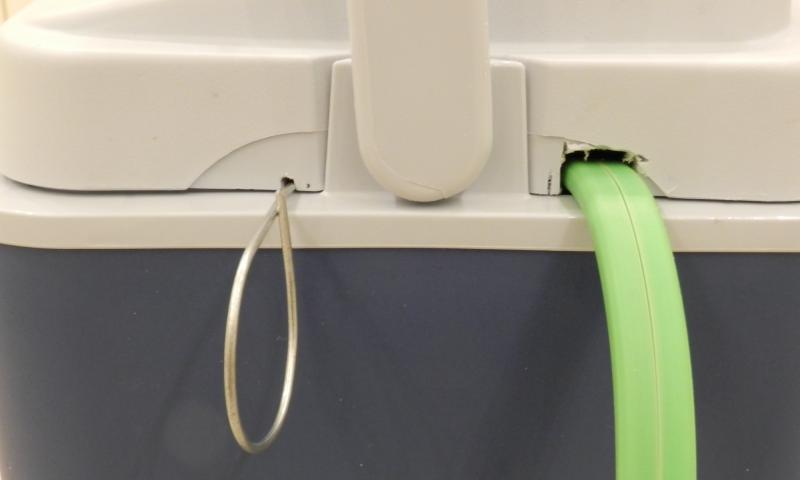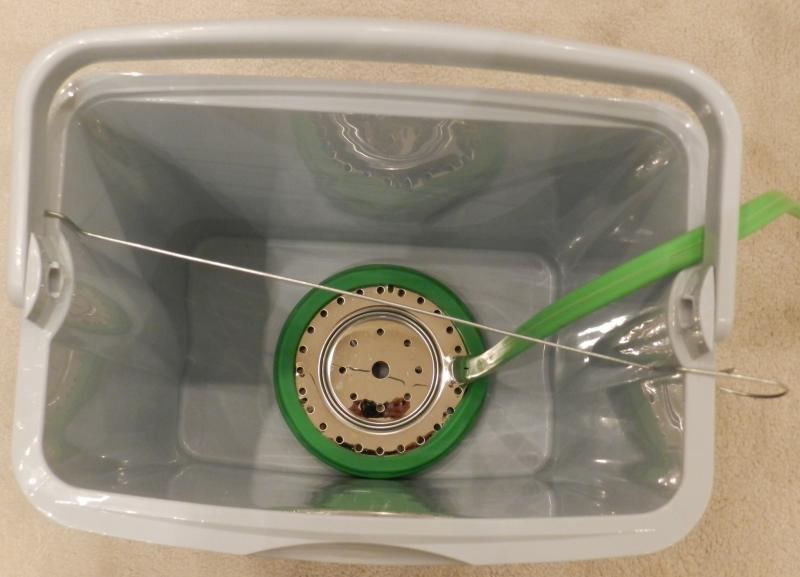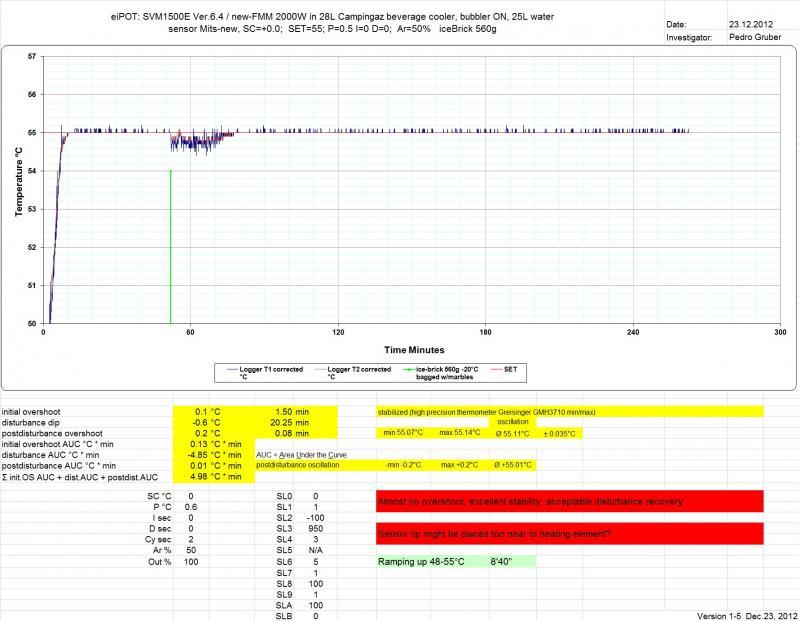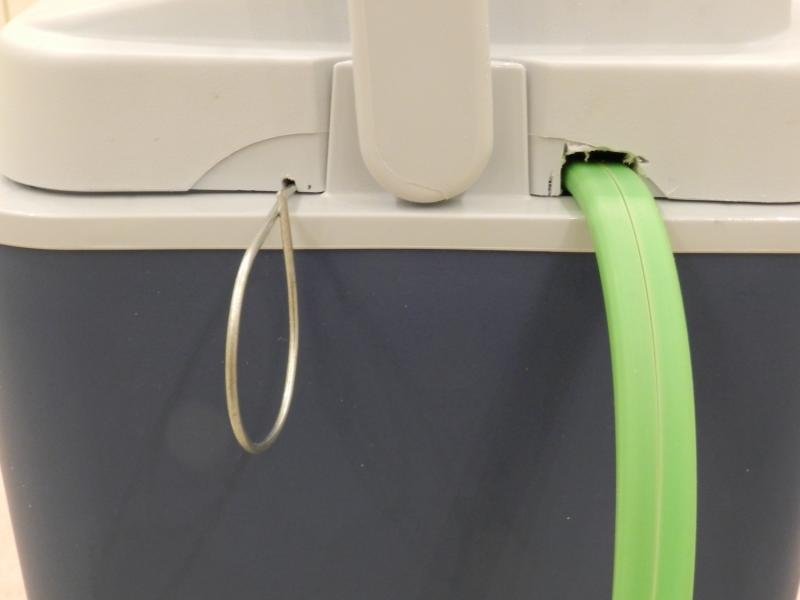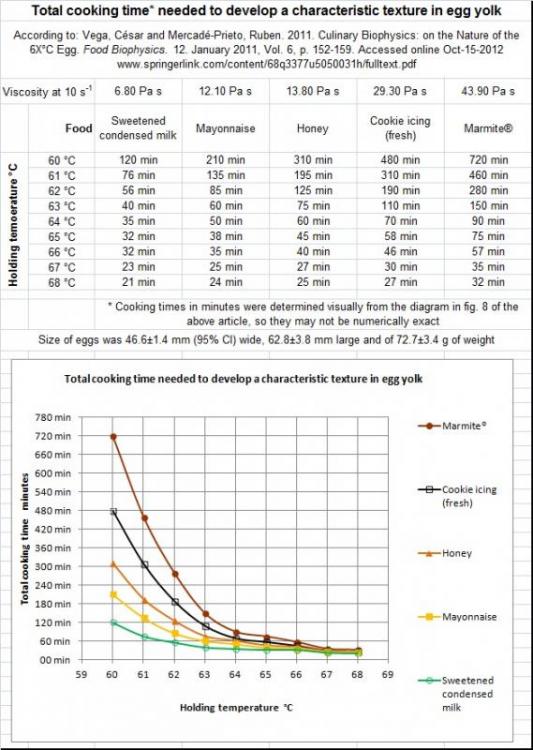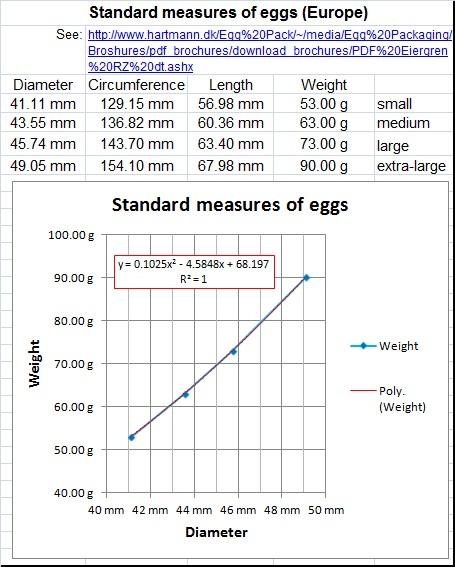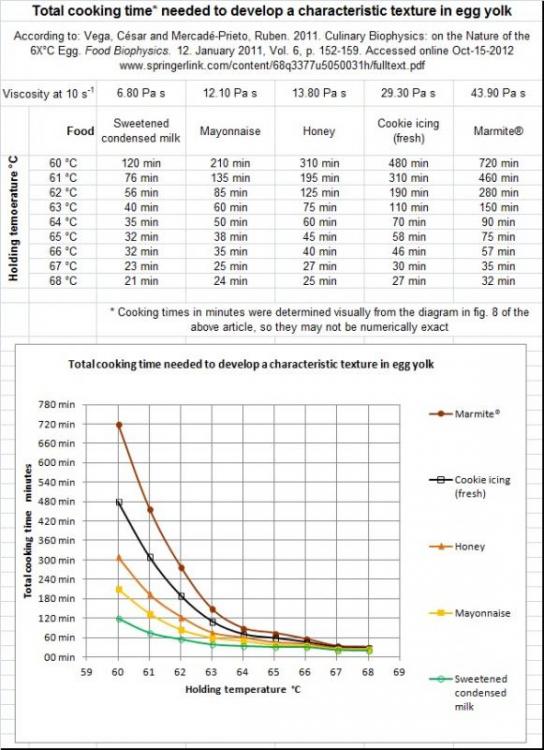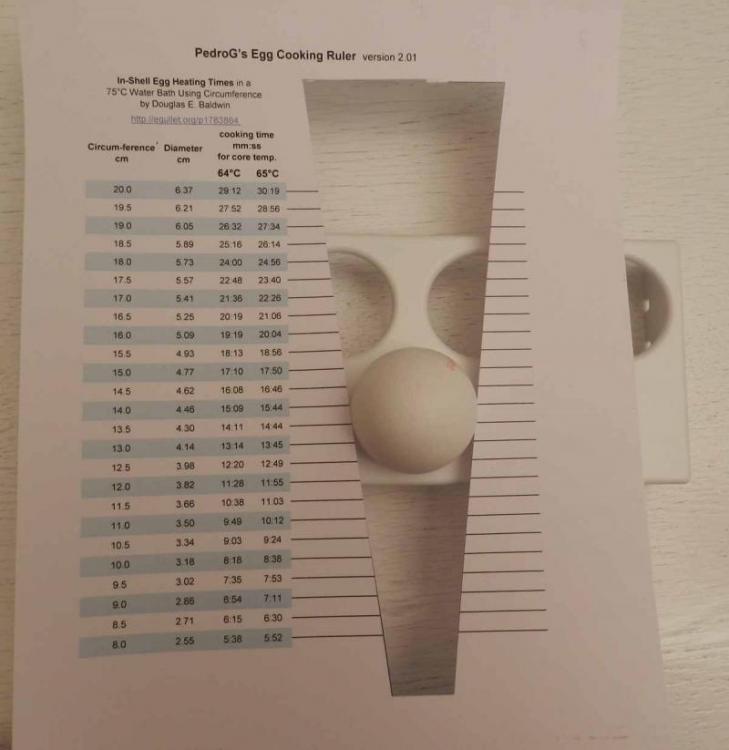-
Posts
518 -
Joined
-
Last visited
Content Type
Profiles
Forums
Store
Help Articles
Everything posted by PedroG
-

The Food Safety and Home Kitchen Hygiene/Sanitation Topic
PedroG replied to a topic in Kitchen Consumer
See here. So if you can make sure your fridge is always below 5°C with your Thermapen, you are OK for a week. P.S. The coldest zone in the fridge is at the bottom, and temperature swings by opening the door are minimized within the drawers. -
Dunking in the bag avoids recontamination; it need not be boiling water, 80-85°C may do the job, see the wikiGullet article Importance of temperature control on pasteurizing times, but clefts in the meat remain untreated. Dunking before bagging will reach the surface in clefts as well, but while dabbing dry, eventually seasoning and/or marinating, and bagging, recontamination may occur if you don't follow very strict hygienic rules.
-
Cooking at 54.4°C or above will kill any pathogenic bacteria. A bad smell comes from spoilage germs that may survive and thrive at higher temperatures. These may in fact be killed by a short dunk in (nearly) boiling water, provided there are no deep clefts in the meat.
-
The longer the better.
-
http://www.thermoworks.com/products/handheld/mtc.html#ProbeTab says: The Miniature Needle Probe is a Great choice for Sous Vide cooking,as the PTFE cable and sealed junction allow you to immerse the cable and probe. The Fast Response Meat Needle Probe which attaches directly to the thermometer without cable would be difficult to use in the water bath.
-
See Douglas Baldwin's Guide: Find out where in your refrigerator the coldest area is and try to regulate it down to 1-2°C, using a calibrated reference thermometer.
-
Or use rice bran oil with a smoke point around 247°C.
-
Yes, Peter, bagging is not necessary, and the trick with rigid containers works even with clamp type machines, as I showed back in 2009: Infusing cucumbers, melons etc Instant rum pot Sorry, these Wikia articles no longer look as they were created and arranged because Wikia staff replaced the "Monaco skin" with their crappy "new look". See also an earlier discussion in the old SV topic and Cooking with Your Absurdly Expensive Chamber Sealer.
-
According to en.wikipedia.org/wiki/Egg_%28food%29#Contamination 1 in 30'000 eggs is contaminated with Salmonellae. D[140°F (60°C)] = 1.73 minutes or 5D[140°F (60°C)] = 8.7 minutes according to FOOD PATHOGEN CONTROL DATA SUMMARY. Looking at egullet.org/p1802400 you see that the yolk may not be safely pasteurized with the 75°C fast method when going for 64°C core temperature. You can pasteurize eggs by placing in a 57°C water bath for at least 75 minutes according to Douglas Baldwin's guide. So if you want or have to go the safe way, pasteurize all your eggs immediately and then store in the fridge until used.
-
In-Shell Egg Heating Times in a 75°C Water Bath Using Circumference or Diameter Douglas Baldwin made me a nice birthday present, he recalculated the EggHeatingTime table using diameter instead of circumference, with an increment of 1mm diameter instead of 5mm circumference, and restricting the range to chicken eggs, as extrapolating his experimental results from chicken eggs to quail eggs or goose eggs may eventually not be adequate, taking into account that protein composition and geometry might be different. Using calipers to measure diameter instead of measuring circumference might facilitate “measuring crap”. So here is Douglas’ new table for download: In-Shell Egg Heating Times in a 75°C Water Bath Using Circumference or Diameter.pdf
-
There are as many definitions of "medium rare" as there are authors, and it may also depend on the kind of meat, e.g. I cook beef tenderloin or pork to 52°C and racks of lamb to 55°C.
-
I totally agree that a setup like this has zero WAF, but I have it downstairs in the air raid shelter. If I were forced to have my SV rig in the kitchen, I might opt for the Vac-Star SousVideChef II which is easily stowed away in a drawer.
-
The GMH 3710 / SET1 ( -20, 0, 70 °C ) Calibration Pt100-High-Precision Measuring System is EUR 254.- excl.VAT. To see the price info you have to create an account (free) and log in. See if you have a calibration laboratory (e.g. http://www.testo.es/online/abaxx-?$part=PORTAL.ESP.HomeDesk&$event=go-home ) nearby for recalibration.
-
DiggingDogFarm asked me about the Thermoworks Reference Thermometer, ±0.05°C System Accuracy Model #222-555. A 0.01° resolution thermometer with a 5-point calibration certificate at USD 295 certainly is a bargain, although it has no min/max function which would be practical for PID-tuning experiments. Does anyone have experience with it? Please report your experiences in the Reference Thermometer Topic so it can be included in the wikiGullet Page on Reference Thermometers.
-
In short: I have the eiPOT and am happy with it (in a 28L cooler). eiPOT™ Review Here it is, my Xmas present: The eiPOT™, i.e. the SousVideMagic 1500E PID-controller and the new version of the FreshMealsMagic immersion heater/bubbler. The whole combo fits into a box of the size of two SVMs. Shipping from Hong Kong to Switzerland took 42½ hours (including 7h time difference). The SVM 1500E is the same as the 1500D, except it has an integrated air pump (which makes it necessary to offer different versions for the 110V world and the 220V world), a top display instead of a front display, and adapters for wall mounting. So it can be placed in different positions: Rear panel: IMPORTANT NOTE FOR THOSE WHO DO NOT READ MANUALS: As the controller contains an air pump which is connected to tubing that is being submerged, it is mandatory to place the controller above water level. There seems to be a check valve in the air tube, but it is still safer to follow the rule to place the controller above water level. BTW the air pump causes practically no vibration and a noise that is audibly weaker than usual aquarium air pumps. The two NTC temperature probes that come with it have a metal plug instead of a plastic plug: The new FMM has a flexible hose instead of the metal tube of the old FMM, long enough for 80cm submersion of the heater. Weight has been reduced from 1255g to 765g by omitting the air stone, and the flexible hose instead of the metal tube makes it less bulky for shipping. They ship it with the temperature probe mounted so that its tip is between the two metal plates and very near to the heating element; this is to prevent fools from setting their house on fire by powering it without submersing in water. In my experience this leads to severe oscillation, I prefer to place the tip of the probe about 5-8cm above the metal plate and on the opposite side of the hose, facing the wall of the pot to avoid contact with food pouches.I measured a resistance of 26.4 Ω which yields 2000W at 230V. Now to set up a SV rig, I modified a 28L Campingaz beverage cooler by cutting a notch in the cover to accommodate the FMM’s hose plus the temperature probes of my Greisinger GMH 3710 high precision thermometer and of the Voltcraft K202 data logger, plus two notches to accommodate a skewer bent from 3mm steel wire with a sharpened tip for easy penetration of bags. If you do not have a supply of 3mm steel wire at hand, just use a hanger from the dry cleaning store. Ramping up to 55°C from ambient 22°C took roughly half an hour which is in accordance with the calculated value, see my table “Water-bath ramping up time 22°C to 55°C”. Autotuning results with SP=55°C and Ar=50% were P=3.9°C, I=1876sec, D=58sec.This resulted in a postdisturbance overshoot of 0.3°C and postdisturbance oscillation of ±0.115°C. With very responsive systems with low thermal inertia (heating element in the water) I prefer using P-control only, as with a very narrow P-band there is almost no negative offset which would have to be corrected by Integral action. In contrast, with rather inert systems like rice cookers, coffee urns or the like (heating element outside the vessel wall) large P-bands are necessary to avoid overshoot, resulting in the need to correct negative offset by Integral action. So I did simple closed loop tuning: Closed loop tuning with 25L water in 28L Campingaz beverage cooler: SP=55°C, I=0, D=0 I decided to use P=0.5 I=0 D=0. A test gave the following results: CONCLUSION Functionality of the new FMM is the same as the old FMM, but handling is more practical, and it is less bulky for stowing away. SVM 1500E is made for professional use, and it has the advantage over the 1500D of a built-in air pump which on the other hand has the disadvantage that the SVM 1500E must be placed above water level, which might necessitate wall mounting. I clamped mine on top of my “tower” of SVMs (different software versions for testing and calibrating); I fear I will reach the ceiling before SVM 1500Z.
-
Yum-yum! Looks delicious!
-
I also noted this with the SideKIC but it was in a smaller container at the time. Until things level off I'm there with my Thermapen to check the water temp periodically. I've also noted that the SideKIC will display a temp lower than what I find with the Thermapen during the initial heat up. But once it all comes to temp it's pretty stable and the display and Thermapen will only vary by .5*F Different thermometer readings during ramping up is a well known phenomenon due to different thermal time constants of different probes. Below is an example. It shows that the K-type thermocouple of the K202 data logger is fastest, next is the Pt100 probe of the Greisinger GMH-3710 high precision thermometer, and of the NTC thermistors that come with the SousVideMagic there are different types with different thermal time constants.
-
404 not found. Here is the correct link: www.lesmarmitonsnj.com/sous-vide-cooker.pdf
-

Sous vide setup: Dorkfood vs Auber vs SousVideMagic vs SideKIC?
PedroG replied to a topic in Kitchen Consumer
tsp. Did you read the posts over in the main SV topic? Auber and SVM do have autotune functions, DSV seems to be simpler, no PID-tuning at all. If you are concerned about your wild cats, the best choice might have been a SousVideSupreme, no cables and tubes that can be pulled out by your cats. But as you already have the SVM controller, the FMM might in fact be your best choice for several reasons: An immersion/submersion heater has minimal thermal inertia, making PID tuning very easy, see the last post in the old SV topic; any system that heats the container before the water has more thermal lag with more overshoot, requiring a broader proportional band and leaving you with extensive tuning experiments to find the best Integral and Derivative values (autotuning values are not the best possible values). The new FMM has the sensor cable buried in the silicon hose, leaving less free cable for the cats to pull out; in fact it would be virtually impossible to pull the sensor out of the water bath, and if your cats pull out the sensor's plug from the SVM, the controller stops heating. As a container, I would recommend a tall beverage cooler where you can lock the lid so the cats can't remove the lid and jump into the water (you would be very sad, and you would not appreciate medium rare cat's meat without proper post mortem aging). I run my FMM in a 28L Campingaz beverage cooler with P=0.5 I=0 D=0 with only ±0.045 °C oscillation. -
-
OK, here is a new version with egg size used. Here it is for download: Total cooking time needed to develop a characteristic texture in egg yolk_2.pdf
-
Good suggestion, Enrique! Considering standard measures of eggs, I guess César Vega divided width and length by two to calculate with radii, so I should modify the citation to "46.6±1.4 mm (95% CI) wide, 62.8±3.8 mm large and of 72.7±3.4 g of weight"? I think with the longer cooking times (maybe 45min up) size of the eggs will not matter much as it comes to equilibrium cooking, not delta-T-cooking.
-

Sous vide setup: Dorkfood vs Auber vs SousVideMagic vs SideKIC?
PedroG replied to a topic in Kitchen Consumer
If you plan to combine an SVM with a bucket heater, consider this one (see also https://getsatisfact...e_bucket_heater ) or the Marshalltown 742G Bucket Heater, plus a cheap aquarium bubbler like this one. -
The 6X°C Egg Pedro, the full text is no longer available for download on the site. I would be grateful if you downloaded a copy you can share... Fig. 8 of the above article shows "Iso-viscosity lines that relate the holding temperature to the total cooking time needed to develop a characteristic texture in egg yolks"; I determined the holding times in minutes visually from this diagram and made an Excel sheet: Here it is for download: Total cooking time needed to develop a characteristic texture in egg yolk.pdf
-
Maybe this would make measuring easier and faster: Download here: http://egullet.org/p1840397 (Any suggestions for improvement?) Another possibility to measure egg diameter using calipers (instead of "circumference measuring crap") was described over at Sous Vide Dash. Adding diameters to Douglas Baldwin's EggHeatingTable would be easy if desired.





